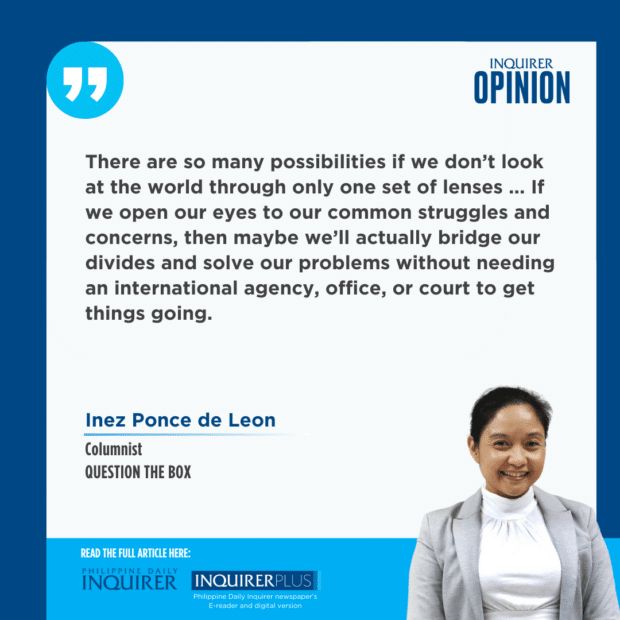
A few weeks ago, Ateneo’s Fr. Ben Nebres gave a talk which, among others, defined the oft-cited goal of “bridging cultural divides.” This phrase is commonly associated with work that identifies cultural values that differ across, and might drive wedges between groups.
Bridging the divide, Father Ben said, is about engaging directly with people in conversations about our common struggles and shared dreams. It could be the beginning of our journey toward becoming a people.
This idea is consistent with my own advocacy of carrying out science and risk communication that go beyond the deeply flawed model of “give information to the lay public.” When operating with such a model, researchers and practitioners simply concentrate on repackaging information, believing that they know what people want and need. Communication, however, is a much larger field than this, and it involves direct engagement with people.
I shared this advocacy last weekend, as I discussed the basics of science communication with scientists and communicators at a Commservation Workshop organized by the University of the Philippines Diliman College of Science and the group Save Philippine Seas.
The basics of science communication are actually rooted in philosophy, not in how-tos. I unpacked assumptions about people, science, and the process of communication, and showed the many possibilities of communicating science through the lenses of paradigms, or the assumptions we have about reality.
In general, if we assume that those who are educated and objectively separated from a problem are the experts, and if we know, through research, that people are simply seeking information, then the job of a communicator is to merely repackage and then disseminate scientific information.
In contrast, if we assume that those who actually suffer from the problem are the ones who know the problem best, then the job of a communicator is to facilitate activities to empower communities so that they define and solve their own problems.
In yet another contrast, if we assume that everyone has equal experience in defining and solving different parts of the problem, then the job of a communicator is to facilitate activities that will lead to cooperation among these many different, equal experts. These conversations should help them come to common understandings of the problem, which should lead them to solving the problem together.
Simply disseminating scientific information will not work when the problem is a lack of transparency, understanding, or cooperation. When fact checks or fact sheets are pushed to solve these problems, people might feel alienated, and will simply disengage.
These different models also teach us that communication is a scholarly field that extends far beyond dissemination. However, scientists might be accustomed to using dissemination alone because they were socialized into the field using lectures, a one-way form of communication.
At the event, a participant shared how she, a designer, felt that she had been trained in the model of science communication which valued equality among all experts. She realized why she felt out of place when she had to work with scientists, who would employ her at the end of their research and expect her to simply repackage research findings. She understood, now, that it was part of their culture.
Some people in the audience nodded in agreement. I could see scientists among those who looked both guilty and amazed at the idea that their behavior had roots in the culture of science itself.
How could she bridge the divide, she asked?
“Do you do research before designing anything,” I asked, “Or do you design whatever comes to mind?”
She did lots of research, she said, “I have to study people, content, and design, together.”
“Research is something you share with scientists,” I offered. “Start your conversation with it. You have to share your common experiences and struggles before the real work begins.”
Had I had more time, I would have told her that it was just the first step.
Later, her engagement could give the scientist a chance to see how the social sciences operated: that it had to be there at the beginning of any project, to make the objectives holistic; in the middle, so that the project could be shaped by the perspectives of all the professionals involved; at the end, so that the findings would not simply be repackaged. The concerned communities could even be directly involved in the research, from start to finish.
There are so many possibilities, if only one could break out of one’s cultural box and let go of one’s assumptions. There are so many possibilities if we don’t look at the world through only one set of lenses, the way politicians did years ago as the drug war grew ever more deadly beneath the trigger-happy fingers of the people tasked to protect us.
If we open our eyes to our common struggles and concerns, then maybe we’ll actually bridge our divides and solve our problems without needing an international agency, office, or court to get things going.
—————-
iponcedeleon@ateneo.edu

